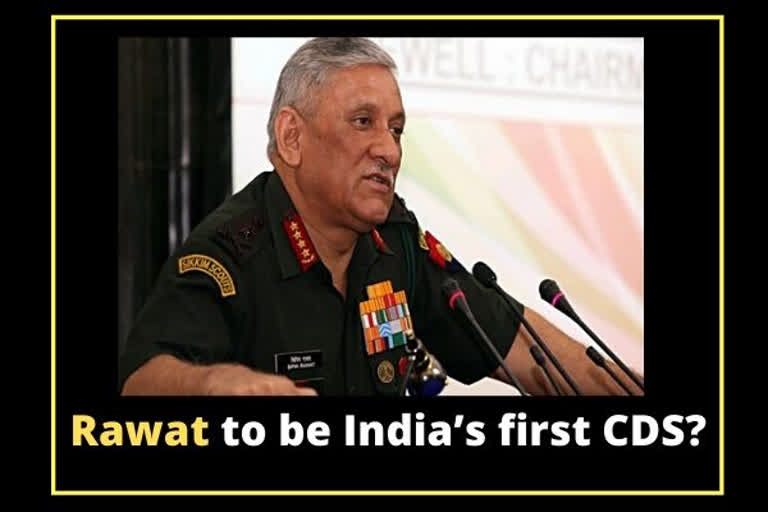New Delhi: With the Cabinet Committee on Security (CCS) reported to have cleared the name of Army Chief General Bipin Rawat’s name to be the country’s first Chief of Defence Staff (CDS), the announcement remains but a formality.
On December 31, 2019, when he walks out of his South Block office, on his last day as Indian Army Chief, Gen Rawat can confidently look back at a tenure of significance that may well stand out as a watershed period with regard to military reforms, policies, operations and approach.
As India’s first CDS, he will man a powerful post that will be the government’s one-point stop on all things military and will be the secretary of the new department of military affairs to be created under the defence ministry. The CDS will also head the newly-created cyber, space and special forces commands.
A four-star general, the CDS will be the first among equals—the others being the army, navy and the air force chiefs—and his salary scale will be the same as the three service chiefs who are also four-star officials.
This decision is in keeping with the recommendations of the 2012 task force headed by former cabinet secretary Naresh Chandra which had sought the creation of a post of the permanent chairman of the Chiefs of Staff Committee.
Without doubt, General Rawat would have overseen one of the most-action packed tenures of Indian Army chiefs. Many key policy decisions involving military operations and administration had been taken during his time.
Take for instance the Integrated Battle Groups (IBG) which may change the way battles in India are fought. An unprecedented and novel exercise ‘Himvijay’ that was undertaken in Arunachal Pradesh’s forbidding heights before the high passes closed down with heavy snow in late October. And if the results of the exercise are as expected, one of the most important changes of the war tactics of the Indian military will be witnessed.
It will mean IBGs taking over the battlefield from the decades-old tactic of leading the war front with Strike Corps. Lean, mean, agile and self-contained military units will lead the foray into enemy territory in surgical style as opposed to the forward movement of the Strike Corps juggernaut.
To suit the purpose, IBGs will be equipped with a broad array of equipment including aircraft, artillery, and specialists in place of the traditional forward march of the infantry with the accompanying paraphernalia that takes time to organize and mobilize not to speak of the subsequent transportation. Hence, what better place than Arunachal’s unforgiving terrain to try it out.
Undoubtedly, the change is being forcefully pushed ahead by Army chief General Bipin Rawat, for whom the changing tactic will have a legacy aspect. If it passes muster, General Rawat’s name would be recorded for posterity in the annals of modern Indian military history. If it doesn’t, he will be the first person to have tried to implement it seriously in the Indian Army. This change has been prompted to a large extent by the realization that modern wars will be short, swift and intense affairs.
It was during Gen Rawat’s time that the government’s ‘Neighbourhood First’ policy gained a military aspect with prioritizing of military relations and cooperation with India’s immediate neighbours, a policy that fetched immediate dividends by thwarting the capabilities of insurgent groups in India’s Northeast who operated from bases in Myanmar.
It was also during General Rawat’s time that India made a few surgical and precision strikes across Myanmar and demolishing terrorist infrastructure and launch pads across the Line of Control in Kashmir.
The induction of women in the army became a focus that furthered the overall idea of gender equality as also his argument against the ‘Sahayak’ system by saying that a soldier is meant for war and nothing else.
It was also during General Rawat’s time that the government decided to go on the offensive against militants in Kashmir particularly after the unrest that kick-started with the killing of militant poster-boy Burhan Wani. With the August 5 abrogation of Article 370, the army’s role and responsibility in the Valley had only increased.
The 73-day-long Doklam standoff between Indian and Chinese troops in June 2017 marked another major flashpoint during General Rawat’s tenure.
ALSO READ: Centre clears Bipin Rawat as CDS; announcement to be made shortly


